Famous as the birthplace of life, liberty and the pursuit of happiness, the cradle of liberty offers much more than cobblestone streets and historical landmarks. Cultural, culinary, artistic and ethnic treasures abound in this city and its surrounding countryside.
The fifth-largest city in the country, Philadelphia is a welcoming place, a city based on freedom of expression.
Independence National Historical Park
Liberty Bell
National Constitution Center
Eastern State Penitentiary
Elfreth’s Alley
Penn’s Landing
Philadelphia Museum of Art
Benjamin Franklin Parkway
City Hall
Fairmount Park and Schuylkill River
Kimmel Center & South Street
Philadelphia’s Hidden Treasures
Betsy Ross House
Edgar Allen Poe National Historic Site
Philadelphia the mural capital of the world
Independence National Historical Park
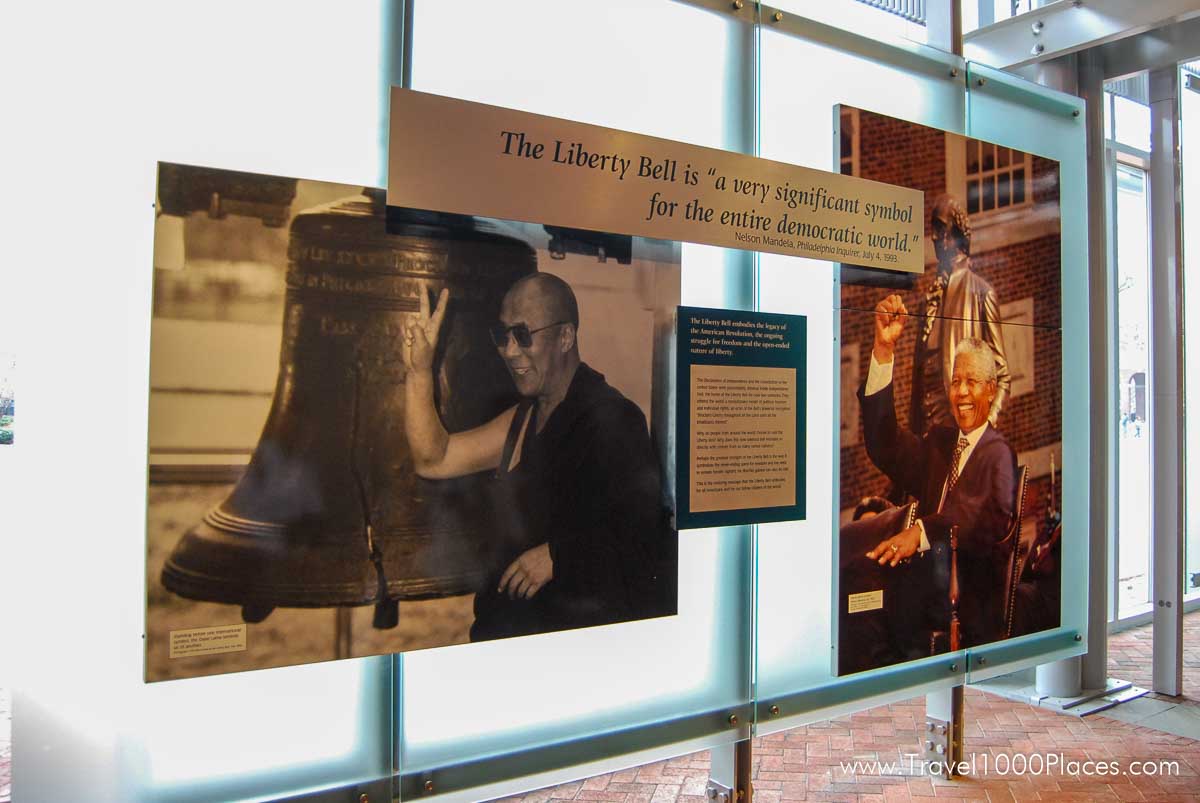
Philadelphia, is often referred to as the birthplace of our nation.
At the park, visitors can see the Liberty Bell, an international symbol of freedom, and Independence Hall, a World Heritage Site where both the Declaration of Independence and the U.S. Constitution were created. In addition, the park interprets events and the lives of the diverse population during the years when Philadelphia was the capital of the United States from 1790 to 1800.
A section of the park where Benjamin Franklin’s home once stood is dedicated to teaching about Franklin’s life and accomplishments.
Independence National Historical Park was created by an Act of Congress on June 28, 1948. Accredited by the American Association of Museums, Independence NHP covers over 54 acres in Philadelphia’s Old City, and includes Independence Hall, the Liberty Bell, Congress Hall, and other historic buildings associated with the founding of the United States.
The park is open from 9:00 am daily with the exception of Christmas day. A visit to Independence National Historical Park should start at the Independence Visitor Center, located at 6th and Market Streets. Here, visitors can pick up a park brochure, park map, and the free, timed tickets required for Independence Hall.
Park Collections and Sites
An accredited museum, the park has almost 3 million items in its collection. Many of these items are on display in buildings and exhibits throughout the park, while others are kept in storage for use by researchers and in future exhibits. The museum technical staff provides collections care for objects installed in 17 historic buildings, five modern buildings and four museum storage areas. Museum collection items range from the best known, such as the Rising Sun Chair and Syng ink stand in Independence Hall, to lesser known items such as architectural elements from demolished buildings or archeological fragments.
Historical buildings that are part of Independence NHP include:
Independence Hall (a World Heritage Site), Old City Hall, Congress Hall, First Bank of the United States, Second Bank of the United States, Todd House, Bishop White House, Germantown White House (includes the Deshler Morris House and Bringhurst House), Free Quaker Meeting House, and Merchants’ Exchange Building.
Other park buildings and exhibits include:
Liberty Bell Center, Franklin Court (which includes the Fragments of Franklin Court exhibit, the Printing Office and the Underground Museum), Great Essentials Exhibit in the West Wing of Independence Hall, Declaration House, New Hall Military Museum, and Independence Living History Center.
Surroundings
Independence NHP also serves as steward to some of Philadelphia’s greatest outdoor public spaces.
Independence Mall runs between 5th and 6th Streets, from Chestnut Street to Race Street.
It provides space for buildings such as the Liberty Bell Center, Independence Visitor Center, and National Constitution Center, as well as space for public gatherings and special events.
Independence Square is the city block bounded by 5th Street, Walnut Street, 6th Street, and Chestnut Street. An area that has always included walks and greens for public enjoyment, the block now known as Independence Square was last redesigned in 1915 and is designated an historic landscape.
Washington Square is one of the original squares in the 1682 plan for the City of Philadelphia as designed for William Penn. It became a Potter’s Field or Strangers’ Burial Ground in 1706 and also served as a burial ground for the town’s free and enslaved Africans. During the Revolutionary War it doubled as a military cemetery; more than 2,000 soldiers – both patriots and prisoners of war –were buried there and the Tomb of the Unknown Soldier of the American Revolution was established in 1953.
Welcome Park, a lesser known area within Independence NHP, borders 2nd Street and is the site of William Penn’s slate roof house, torn down in the 19th century. Today, it provides visitors to Philadelphia with an overview of the city layout and a brief history of William Penn.
Location Visitor Center
Corner of 6th St & Market St.
Website: https://www.nps.gov/inde/
Liberty Bell
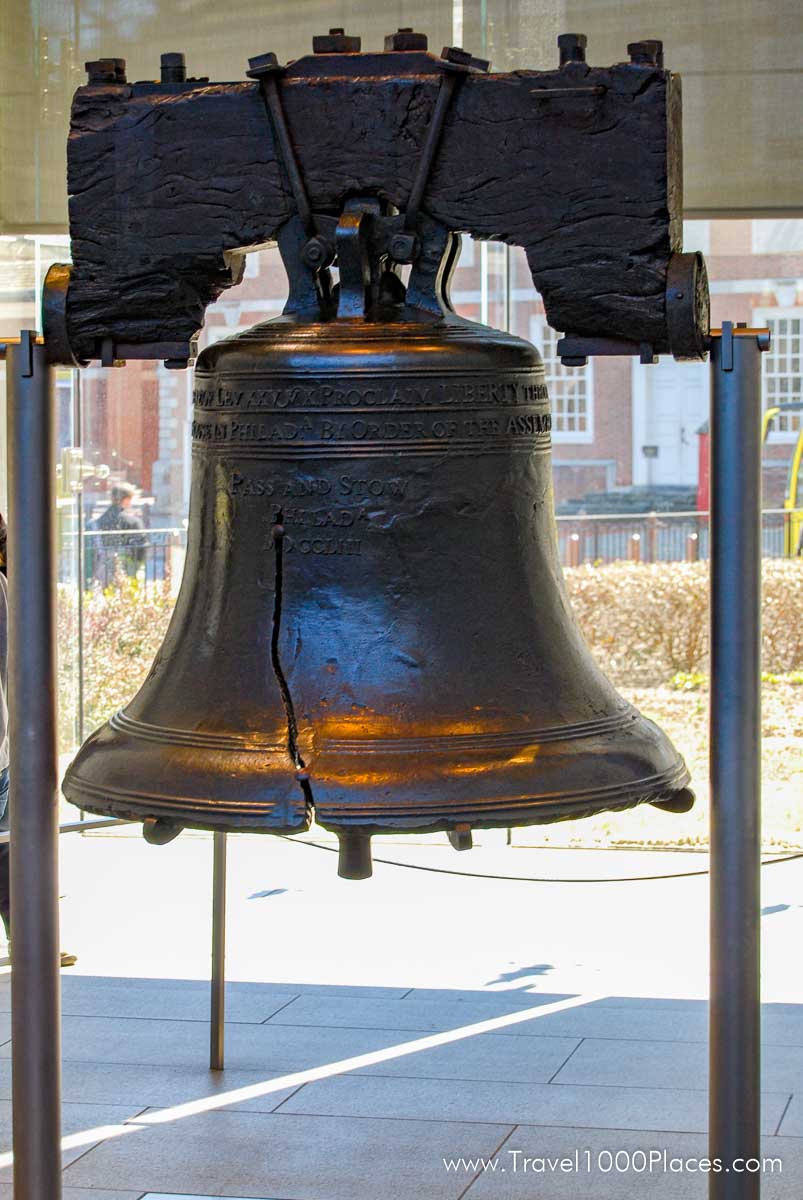
The Liberty Bell’s inscription conveys a message of liberty which goes beyond the words themselves. Since the bell was made, the words of the inscription have meant different things to different people.
When William Penn created Pennsylvania’s government he allowed citizens to take part in making laws and gave them the right to choose the religion they wanted. The colonists were proud of the freedom that Penn gave them.
In 1751, the Speaker of the Pennsylvania Assembly ordered a new bell for the State House. He asked that a Bible verse to be placed on the bell – ‘Proclaim LIBERTY throughout all the Land unto all the inhabitants thereof’ (Leviticus 25:10).
As the official bell of the Pennsylvania State House (today called Independence Hall) it rang many times for public announcements, but we remember times like July 8, 1776 when it rang to announce the first public reading of the Declaration of Independence.
The Old State House bell was first called the ‘Liberty Bell’ by a group trying to outlaw slavery. These abolitionists remembered the words on the bell and, in the 1830s, adopted it as a symbol of their cause.
Beginning in the late 1800s, the Liberty Bell travelled around the country to expositions and fairs to help heal the divisions of the Civil War. It reminded Americans of their earlier days when they fought and worked together for independence.
In 1915, the bell made its last trip and came home to Philadelphia, where it now silently reminds us of the power of liberty. For more than 200 years people from around the world have felt the bell’s message. No one can see liberty, but people have used the Liberty Bell to represent this important idea.
Visitors are able to see an exhibit about the Liberty Bell, focusing on its origins and its modern day role as an international icon of freedom. The exhibit illuminates the Bell’s storied past, focusing on both liberty attained and on liberty not yet realized.
Address: 6th St and Market St
NCC – the National Constitution Center
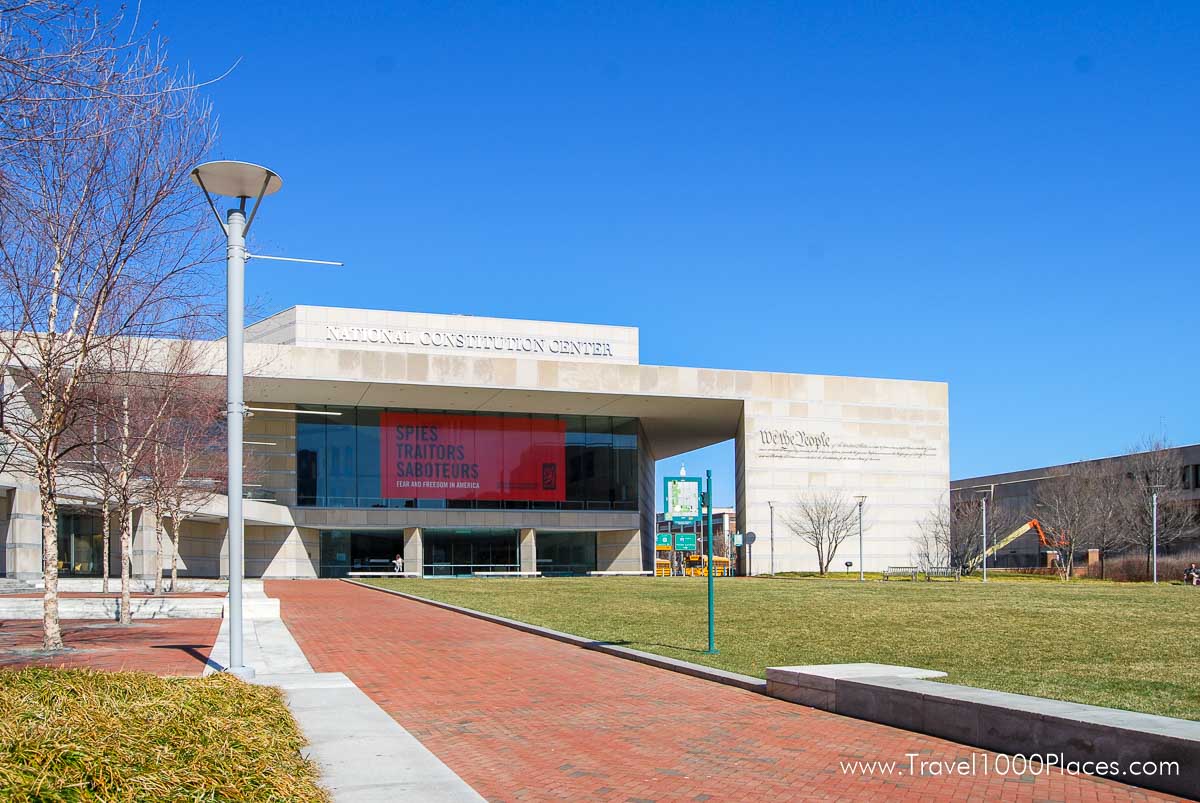
… dedicated to to increase awareness and understanding of the Constitution, the Constitution’s history and its relevance in people’s daily lives. The NCC opened to the public July 4, 2003 and is an independent, nonpartisan, nonprofit organization was created by the Constitution Heritage Act in 1988.
The Center is located at 525 Arch St. on Philadelphia’s Independence Mall, America’s most historic mile, in Independence National Historical Park.
The NCC is a 160,000 square-foot center with 67,785 square feet of exhibit space and visitors learn about the Constitution from more than 100 multimedia and interactive exhibits, sculptures, photographs, film, artifacts. There’s also a 350-seat theater that offers something for everyone – from the serious scholar to the casual historian, from the young to the young at heart.
Visitor’s Experience
The visitor’s experience begins in the Richard and Helen DeVos Exhibit Hall with The Story of We the People, the permanent exhibit at the Constitution Center.
The first part of the story unfolds in the Kimmel Theater where “Freedom Rising,” a 17-minute show combining a live actor and multimedia elements on a 360° screen, tells the story of the Constitution from Revolutionary times through today.
From there, visitors move to The American Experience where the story of the Constitution is told through interactive and multimedia components arranged in three concentric circles.
As visitors continue through the exhibit, they are completely encircled by the text of today’s Constitution printed on a glass wall eight feet above their heads and measuring 16-feet tall and 450-feet long.
As they make their journey through constitutional history, visitors discover that the Constitution affects nearly every facet of their lives.
Through interactive components, visitors actively learn how the Constitution affects how the government functions. Only at the National Constitution Center are people able to watch themselves take the Presidential Oath of Office on the steps of the Capitol, see and hear the stories of 100 Americans on the Center’s video American National Tree, put on a robe and sit on a replica of the Supreme Court bench, and vote for their favorite U.S. President of all time.
The visitor experience comes to a climax in Signers’ Hall, where visitors walk among 42 life-size bronze figures of the 39 men who signed the Constitution as well as the three who dissented.
It is here that one of the most poignant moments of a visitor’s experience takes place – each visitor is given the opportunity to actively affirm the principles of citizenship by signing their name to today’s Constitution in a custom-made signing book. Visitors can also sign their name as a dissenter and explain why they disagree with the Constitution’s principles.
The signing books will be kept in Signers’ Hall permanently so visitors will be able to return for years to come and find where they signed their name.
As visitors leave Signers’ Hall, they are greeted with a direct view of Independence Hall through a wall of glass 40-feet high.
They also receive an active call to citizenship as they enter the Shahara Ahmad-Llewellyn and J. Bruce Llewellyn Citizens’ Cafe where they can e-mail their congressmen, participate in discussions about their experience or watch up-to-the minute Constitutional issues unfold on a giant video wall.
The Center’s outreach initiative connects with millions more from around the nation and the world who are unable to visit the museum. The Annenberg Center for Education and Outreach offers debates and discussions, a study center, educational materials and a Visiting Scholars program.
The Constitution Center also offers a wide variety of programs tailored specifically for adults, families and schools.
The Center’s Web site (see Web Link further below), serves as a valuable resource for teachers, students and people who are interested in constitutional history and issues.
The Architects & Designers
The National Constitution Center was designed by the architectural firm of Pei Cobb Freed & Partners, led by founding partner Henry N. Cobb, and Ralph Appelbaum and Associates, led by renowned exhibit designer Ralph Appelbaum.
Appelbaum created the visitor experiences and exhibition halls for exceptional museums such as the United States Holocaust Memorial Museum, the Rose Planetarium and the Newseum.
Pei Cobb Freed & Partners is known for its striking designs of public buildings, including the expansion of the Louvre and the East Wing of the National Gallery of Art.
Address: 525 Arch St, Philadelphia, PA 19106
Website: https://constitutioncenter.org/
Eastern State Penitentiary
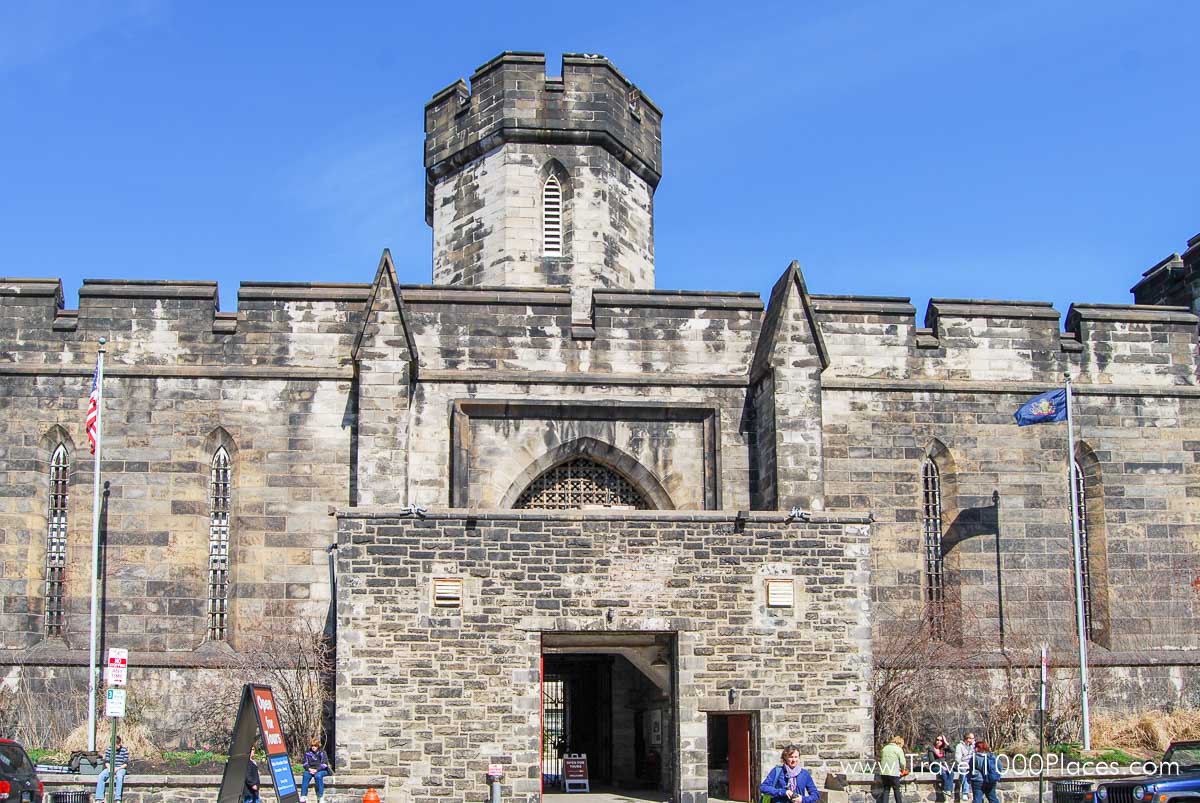
was a radical movement to rehabilitate criminals through solidtary confinement, Eastern State has held some of America’s most famous criminals in its vaulted, skylit cells, including Willie Sutton and Al Capone.
Abandoned in 1971 – 142 years after it opened, the prison is now a lost world of crumbling cell blocks and empty guard towers.
Hours and Location
10 am to 5 pm (last entry: 4 pm). Every day, twelve months a year. Closed Thanksgiving, Christmas Eve/Day and New Year’s Day.
Address:
2027 Fairmount Avenue, Philadelphia, PA 19130
Website: https://www.easternstate.org/
Elfreth’s Alley
![Elfreth's Alley, Philadelphia [photo: frankschrader.us ; all rights reserved]](https://www.travel1000places.com/wp-content/uploads/2020/05/DSC_0403-exp001.jpg)
This streetscape of 33 Colonial and Federal style homes was once occupied by artisans, including blacksmith Jeremiah Elfreth. Two homes are open to the public for guided tours showcasing the alley’s 300 year history and 18th century life.
Elfreth’s Alley Association
126 Elfreth’s Alley, Philadelphia, PA 19106
Website: http://www.elfrethsalley.org/
Penn’s Landing
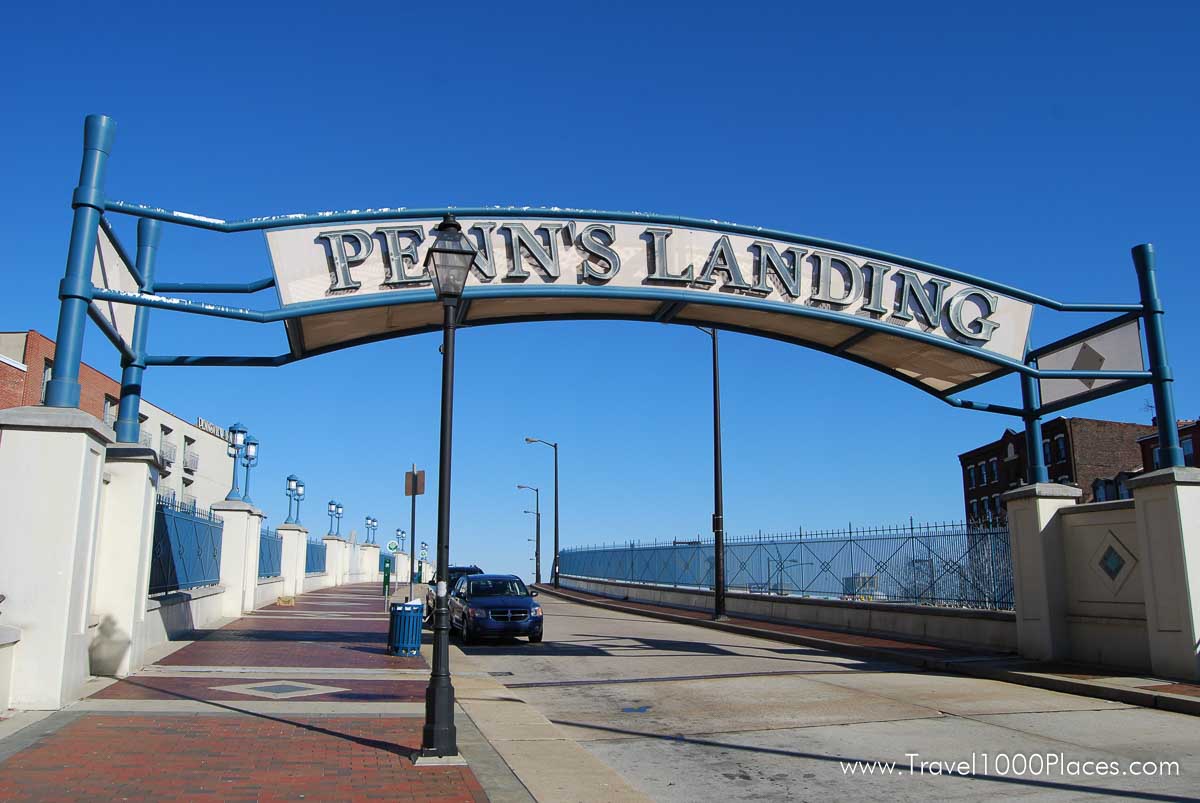
Visitors strolling along the river can see many varieties of ships, old and new.
At the Independence Seaport Museum, located on Penn’s Landing, guests can explore the regions maritime heritage and enjoy the thrill of stepping aboard a cruiser from the 1890s and a World War II submarine.
Philadelphia Museum of Art
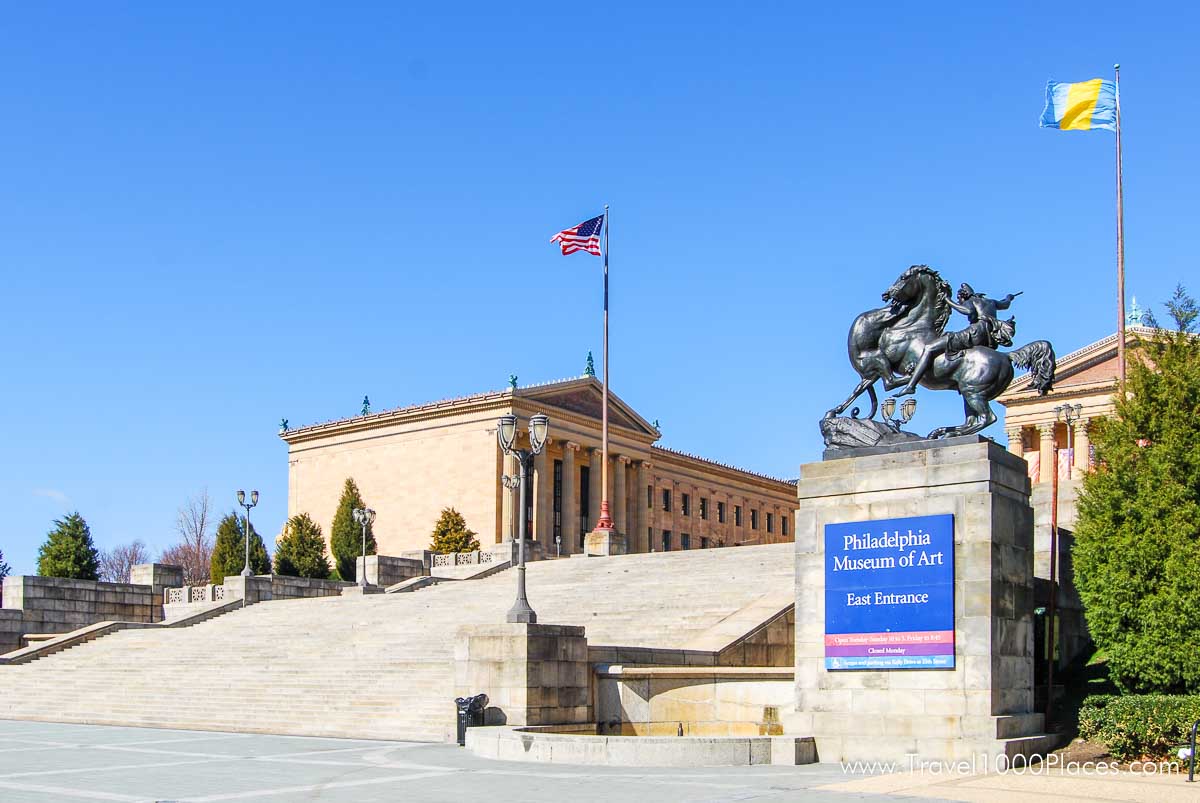
the collections and special exhibitions presents masterpieces of painting, sculpture, decorative arts and architectural settings from Europe, Asia, and the Americas.
The striking neoclassical building is an oasis of beauty and enriching activities, including family programs, lectures, concerts and films.
Location
26th Street at Benjamin Franklin Parkway
Philadelphia, PA 19130
Web: https://www.philamuseum.org/
Benjamin Franklin Parkway
Extending northwest from City Hall, the Benjamin Franklin Parkway is lined with glorious fountains and a vast array of museums and libraries, all ending at the Philadelphia Museum of Art and the famous ‘Rocky’ steps.
This nighttime view from the Benjamin Franklin Parkway of Philadelphia’s City Hall shows the magnificence of an outstanding example of French Second Empire architecture.
Completed in 1901, this landmark in the center of the city is the largest occupied masonry structure in the world and the largest municipal building in the nation
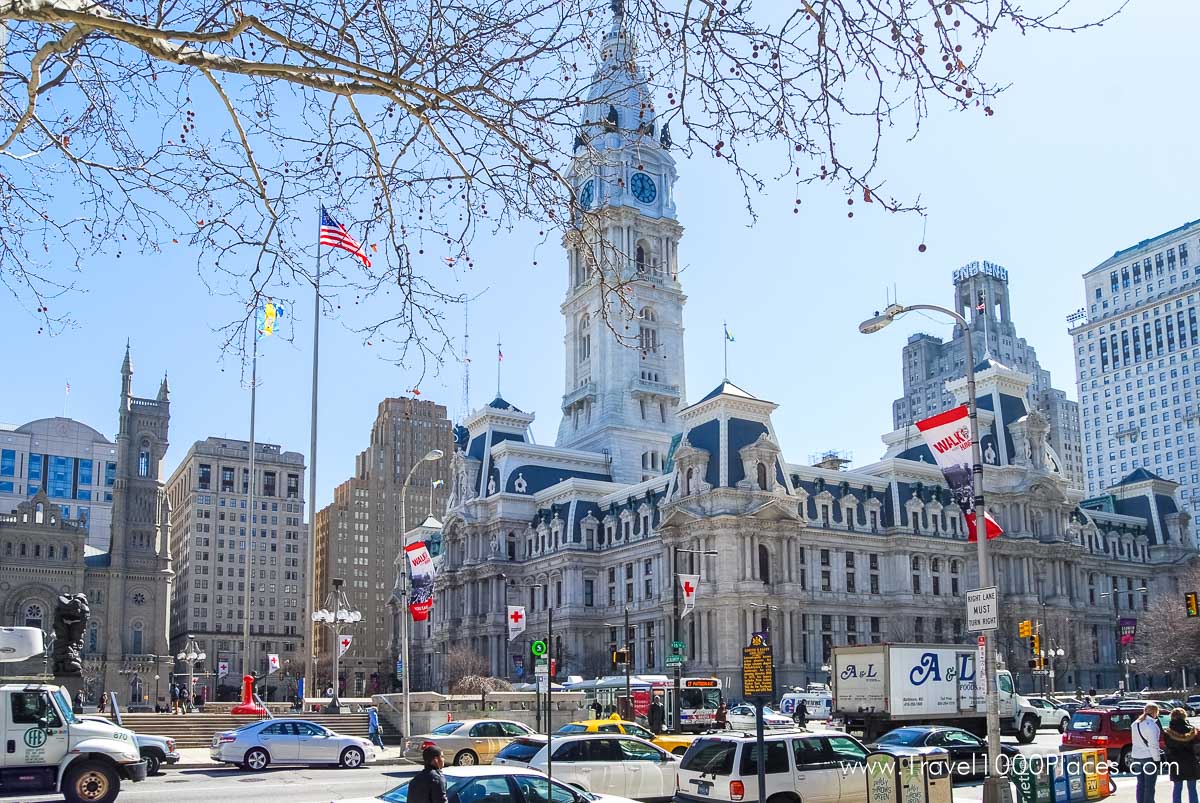
Philadelphia City Hall
Philadelphia’s City Hall, completed in 1901, located in the center of the city, is the largest occupied masonry structure in the world and the largest municipal building in the nation.
The William Penn statue atop City Hall is an unmistakable feature of the Philadelphia cityscape and on its top you find a statue of William Penn.
Until the 1980s, this example of French Second Empire architecture was the tallest building in Philadelphia.
Now, it shares the skyline with shining examples of modern architecture such as One Liberty Place, towering in the background.
Location
1 Penn Square, Philadelphia, PA 19107
Fairmount Park and Schuylkill River
is perhaps best known for the 4,400-acre ribbon of green bordering the Schuylkill River and Wisshahickon Drive.
But this Philadelphia-wide park system actually encompasses 63 separate parks of all sizes and types covering 8,900 acres and features trails for walking, jogging and biking; the Philadelphia Zoo;
a fine group of authentic Early American houses; and much, much more.
The Schuylkill River, stretching 100 miles, was a major reason for Philadelphia’s growth in the 18th and 19th centuries.
The river is now a local favorite spot for recreation activities including sculling.
Kimmel Center & South Street
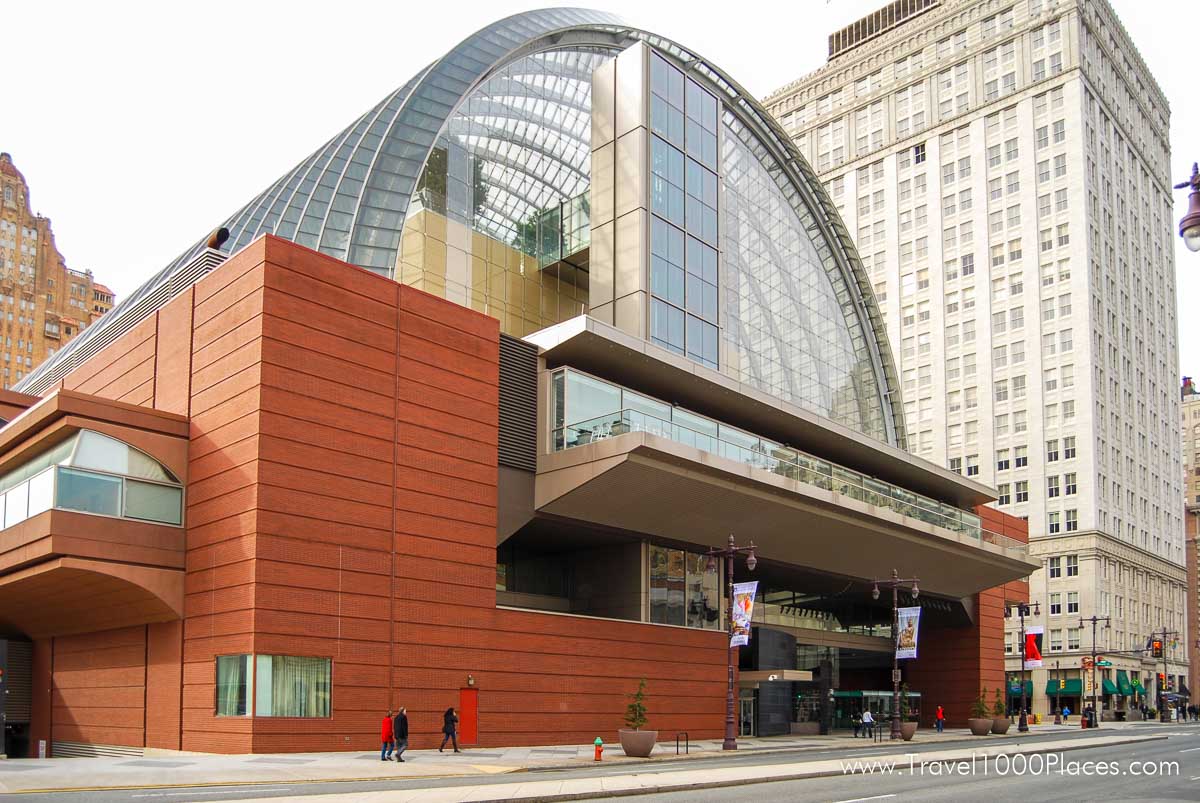
After touring Philadelphia’s world-class attractions and historic sights, it’s time to unwind at one of Philadelphia’s hip nightspots. Visitors can dance to contemporary music, sing with locals at a piano bar or quench their thirst at a trendy lounge.
The Avenue of the Arts is Philadelphia’s premier cultural district and home to world-class arts institutions such as The Philadelphia Orchestra. The historical and architecturally grand Academy of Music is just one block away from the new and equally grand Kimmel Center for the Performing Arts. The jewel of the Avenue of the Arts is the new Kimmel Center for the Performing Arts, an architectural and artistic masterpiece in its own right.
The Kimmel Center houses performances by the world-renowned Philadelphia Orchestra, Peter Nero and the Philly Pops, PHILADANCO and other resident companies, as well as visiting performers from around the world.
The Avenue of the Arts stretches along North and South Broad Street.
South Street, called ‘the hippest street in town’ is lined with restaurants and nightclubs, and bustling with young people.
Old City is known for its hip restaurant scene and many of the restaurants in the trendy neighborhood attract a stylish bar crowd.
Many of the upscale restaurants along Restaurant Row/Walnut Street have chic bars.
Philadelphia’s upscale jazz club, Zanzibar Blue features live performances nightly from legendary and rising stars of jazz, while WarmDaddy’s offers traditional Southern cuisine and live Blues music.
Location
The Kimmel Center is located at 300 S. Broad Street, Philadelphia, PA 19102
Web: https://www.kimmelcenter.org/
Philadelphia’s Hidden Treasures
… and for its world-class museums. In addition to these, the Philadelphia area has a wealth of ‘hidden treasures’, places that may not be included on the usual must-sees . Wander off the beaten path to see some of the city’s more unusual attractions.
It will be well worth the trip!
Italian Market
This colorful corner of South Philadelphia is the world’s largest outdoor market dating back 125 years. It features a variety of imported and domestic foods and products.
Italian Market
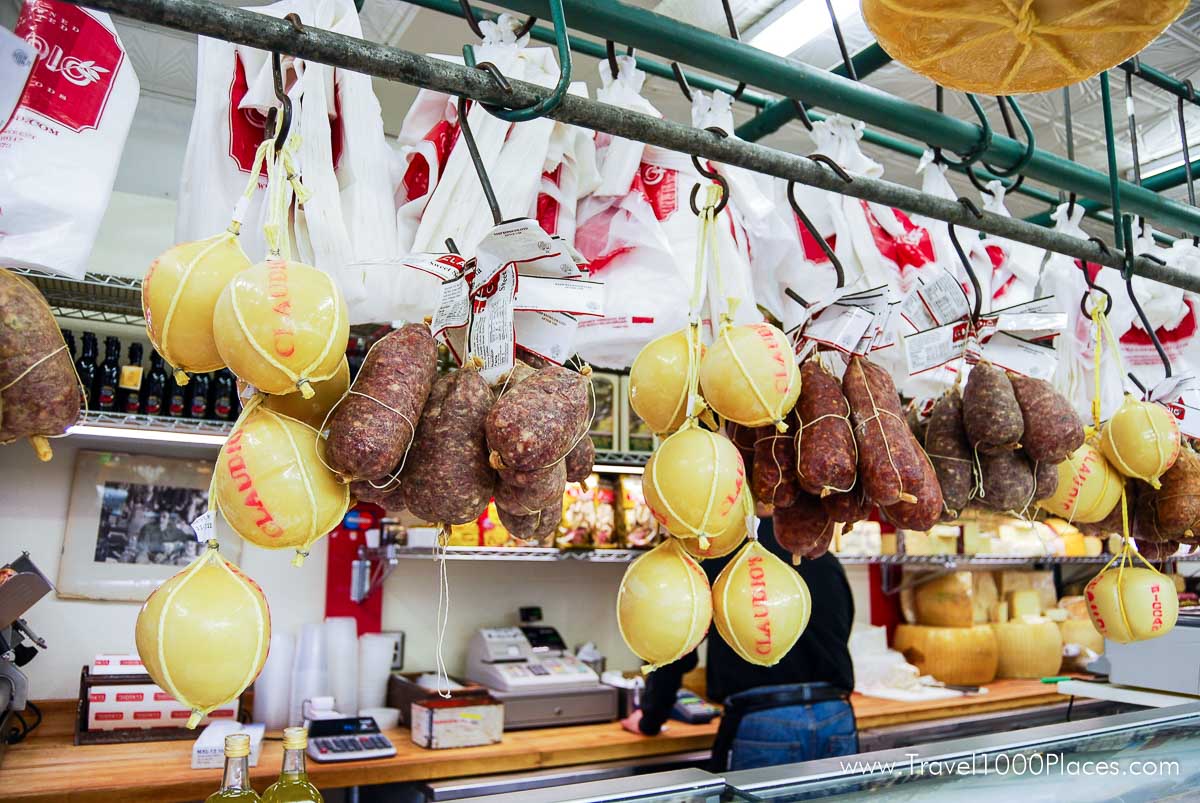
9th Street between Wharton and Christian Street
This colorful square in south Philadelphia hosts the world’s largest open-air market, full of history and traditional customs dating back to its founding by Italian immigrants 125 years ago.
Market visitors will find an incredible selection of local and international cuisine and food, including fresh pasta, cheese, spices, meat, dried fruits and a wide selection of fresh fruits and vegetables. Website: https://www.phillyitalianmarket.com/
Atwater Kent Museum
Philadelphia’s history museum tells the Philadelphia story through lively exhibits and programs. The museum also houses a collection of artist Norman Rockwell’s illustrations from the famous covers of the Saturday Evening Post magazine, which captures the lifestyle of the U.S.A. from 1916 to 1963.
City Hall Tower
Get a birds-eye view of the city atop the tallest masonry structure in America. Take the elevator more than 500 feet above the street to the enclosed observation deck under the 37-foot bronze statue of Philadelphia’s founder, William Penn.
Masonic Temple
The spectacular Masonic Temple, in the heart of Center City, is an architectural marvel. Each of the seven different lodge halls within the building has its own ornate style. A museum within the temple features a vast collection of rare Masonic artifacts related to the Free and Accepted Masons of Pennsylvania, including a book about Freemasonry written by Benjamin Franklin. Visitors can take a guided tour through this architectural masterpiece, which contains seven magnificent halls representing the finest examples of architectural styles, including Gothic, Egyptian and Italian Renaissance.
Rosenbach Museum and Library
This 19th-century townhouse, with its art collections and world-renowned holdings of rare books and manuscripts, displays original artwork, including that of author/illustrator Maurice Sendak and the manuscript of James Joyce’s Ulysses.
Website: https://rosenbach.org/
The Betsy Ross House
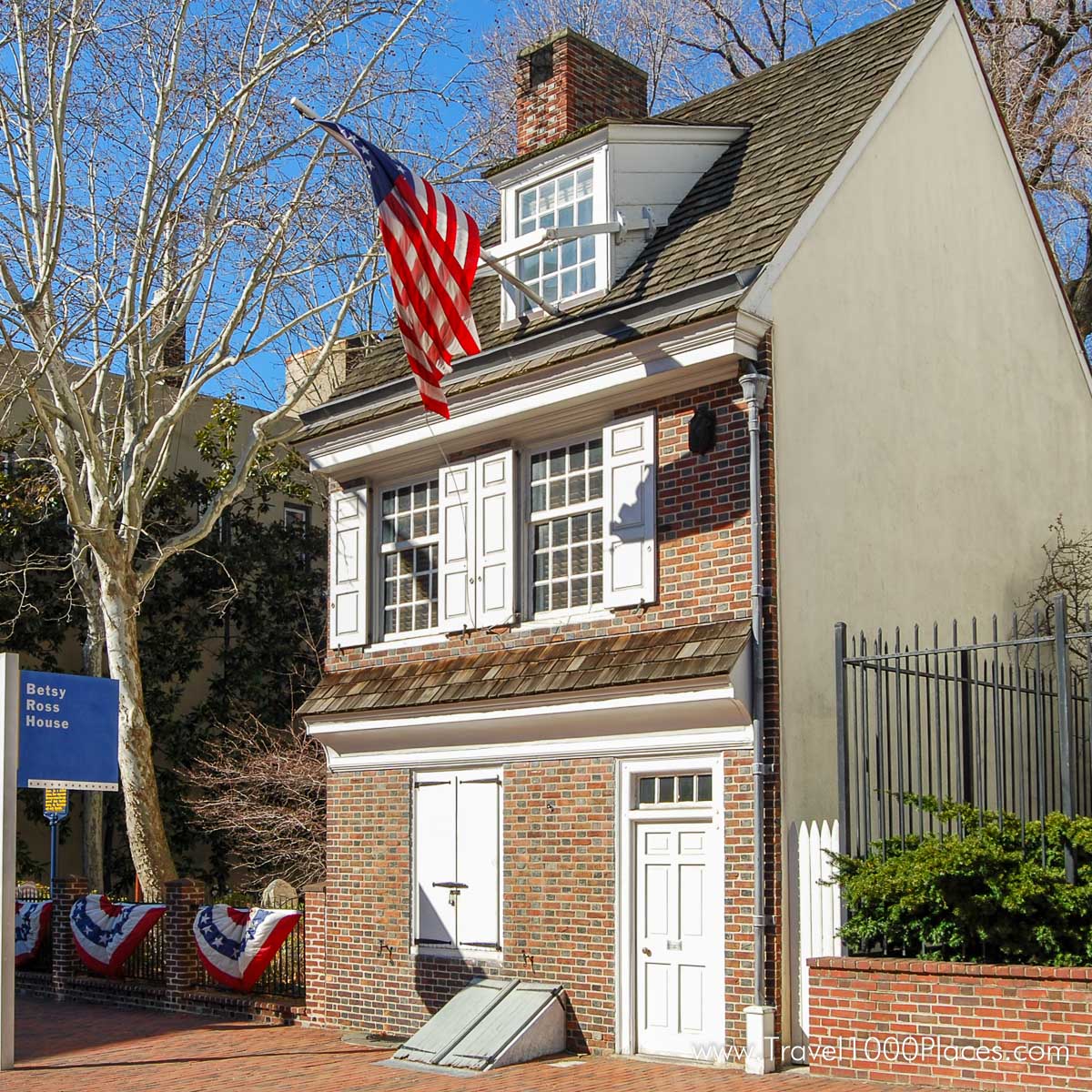
The Betsy Ross House, home of America’s most famous flagmaker, is located at 239 Arch Street … just around the corner from Independence National Historical Park and steps away from other popular attractions like Elfreth’s Alley and Christ Church.
A two and a half story, eight room brick rowhouse, originally built in 1740. The house is restored to the period from 1773 to 1785, when Betsy Ross, as the story tells it, is said to have created the first American flag. The house is furnished with period antiques and some reproduction furniture. Highlights include several objects known to have belonged to Betsy Ross. Self-guided tour lasts about 25 minutes.
The Betsy Ross House is one of the most popular historic attractions in Philadelphia … behind only the Liberty Bell and Independence Hall … with nearly 300,000 visitors each year.
Did she really do it? Well, she certainly could have. Betsy Ross was a prominent Quaker seamstress, upholsterer and, of course, flagmaker in 18th century Philadelphia. The story of Betsy sewing the country’s first flag was brought to public attention in the late 1800s by her family. Although no official records exist to either confirm or deny the story, this patriotic tale has become an enduring and colorful piece of history’s complicated puzzle.
During the summer months, the Betsy Ross House is alive with the sights and sounds of the 18th century, as costumed performers, crafters and musicians bring history to life. All summer performances are free.
Address: 239 Arch St, Philadelphia, PA 19106
Web: http://historicphiladelphia.org/betsy-ross-house/what-to-see/
Edgar Allen Poe National Historic Site
The small house was Poe’s home between 1843 an 1844.
Altogether he lived six years in Philadelphia but only this house exists today. During his time in Philadelphia Poe had his biggest success as Editor and Critic and he published: “The Gold Bug”, “The Fall of the House of Usher”, “The Tell-Tale Heart” and “The Murders in the Rue Morgue”.
Edgar Allan Poe’s tumultuous life, haunting poems, and thrilling tales never cease to fascinate readers. More than any other 19th century American author, Edgar Allan Poe’s vivid writing thrills students and inspires them to read more. A visit to his Philadelphia home allows students to walk through the rooms that sheltered the author and his family.
Address: 532 North 7th St.
Web: https://www.nps.gov/edal/
Philadelphia Mural Arts Program
October 2018 marked the 35th anniversary of Philadelphia’s Mural Arts Program (MAP).
The program originally started as part of the Philadelphia Anti-Graffiti Network and its original goal was both to beautify the city and employ graffiti artists as muralists to redirect their creative energy. Since its inception, more than 2,800 murals depicting scenic views, portraits of community heroes and abstract creations adorn outdoor spaces, making it the largest public art program in the United States. Each mural represents a community effort, and the city’s residents are an integral part of the creative process, conceiving and creating the murals and taking art classes offered by the Mural Arts Program at schools and recreation centers. Professional artists are employed to design and oversee the creation of the murals.
For example, a towering portrait of singer/actor Frank Sinatra and another called Summary of Mummery (a uniquely Philadelphia New Year’s parade) enliven a South Philadelphia neighborhood. Sports stars, authors and artists are also honored with murals throughout the city. Other murals such as The Secret Book, showing a thoughtful, young woman, and Peace Wall, a mural depicting children with different skin tones clasping hands, create powerful messages on once barren or graffiti-covered walls.
“The making of a mural enters peoples’ collective memory as an extraordinarily positive moment in each neighborhood’s history,” said Jane Golden, executive director of the Mural Arts Program. Golden recently co-authored “Philadelphia Murals and the Stories They Tell”, which explains how the program began and shows (with exquisite photography) how it has succeeded. The popularity of the program has grown significantly and Golden travels the world teaching cities how to start their own mural arts program.
The average mural is about the size of a Philadelphia row house – three stories high (35 feet) by 30 feet across, and range in size from one-story projects to an eight-story high mural. The average mural takes approximately two months to complete.
Visitors can get a look at the nation’s largest outdoor art program on private and group tours. Knowledgeable docents lead tours to inspirational murals and provide behind-the-scenes insights into how a mural is created – from conception of the design, to the number of paint cans used – and the stories behind the art.
The Philadelphia Convention & Visitors Bureau (PCVB) works with the Mural Arts Program to offer experiential tours for groups who want a hands-on, behind-the-scenes experience. The tours include a mural tour, meeting with a mural artist and the opportunity to actually paint part of a mural. The Mural Arts Program is also included in the PCVB’s list of voluntourism opportunities where groups can participate in the mural making process during MAP’s community paint days, which is open to the public and held several times throughout the year.
Public tours are offered, see website below.
The tours journey through Philadelphia’s diverse neighborhoods and tell the fascinating stories behind each community’s mural. Visitors and locals alike come away with a deeper appreciation of the complexities of mural making and an understanding of how art has the power to transform lives.
Web: https://www.muralarts.org/
Historical City Tavern
May be the most famous tavern in the USA? At least in Philadelphia. The City Tavern.
This is the place which was called the “most genteel tavern in America” by John Adams and it is considered the “unofficial site” of the First Continental Congress held by the Founding Fathers of the United States. The place was built in 1773 and after it burned down March 22, 1834, it was eventually rebuilt in the 1970’s.
Nowadays it is a restaurant owned by Chef Walter Staib who keeps history alive with the dishes and the interior decoration.
Address
138 S 2nd St, Philadelphia, PA 19106

